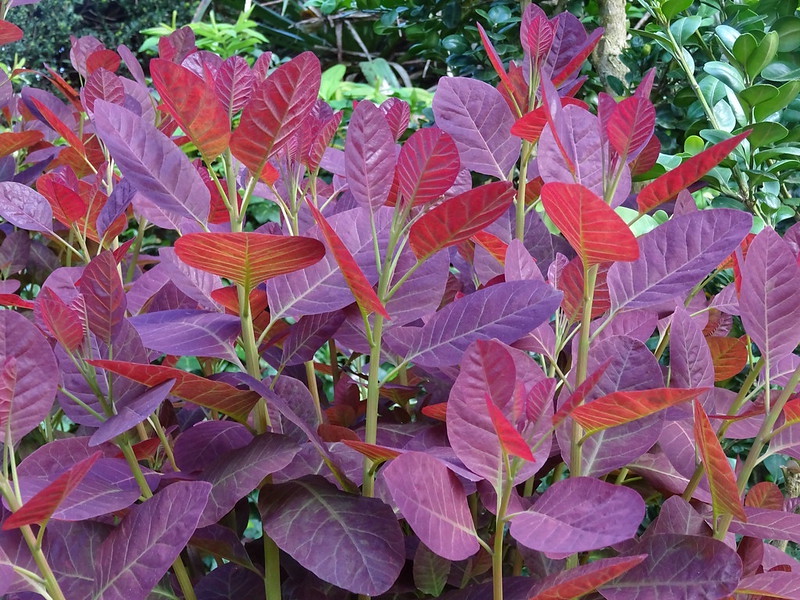Smoke Trees are stunning plants to add a pop of color and interest to your garden. Depending on the variety, fully mature Smoke Trees can be shrub sized and up to medium-sized trees. It is important to keep this final size in mind when choosing a spot to plant a Smoke Tree. Smoke Trees can be kept smaller with pruning, though you may risk impacting the number of blooms the plant can produce, which give Smoke Trees their signature smokey look. Early spring pruning can help maintain a Smoke Tree’s shape, while late winter rejuvenating pruning can help keep your Smoke Tree compact. As always, dead or damaged branches can be removed at any time of the year to keep your Smoke Tree healthy and looking nice.

Some gardeners purposely cut Smoke Tree back hard each winter to stimulate foliage growth. The technique is called coppicing and it can result in lush growth and larger leaves. Coppicing will sacrifice blooms, but the showy foliage may be worth it.
When to Prune Smoke Tree
Smoke Trees are low maintenance and do not require pruning regularly unless you are trying to ultimately change the nature of the plant. If pruning is necessary, do so in the early spring when the plant is still dormant, before it begins producing flower buds. Keep in mind that pruning a Smoke Tree before it blooms may reduce the amount of flowers it can produce. Once bud sites have been set, pruning is not recommended.
Maintenance pruning can help keep your Smoke Tree looking healthy. Remove any dead or damaged branches as they occur. To improve airflow, remove any branches that cross into the center of the plant, in the spring. If your Smoke Tree has grown too large and you are looking to start fresh, you can cut its branches back to the ground in the winter. This will allow the plant to produce completely new branches. Your Smoke Tree will not produce blooms the following months after such a drastic prune.
Why Prune Smoke Tree
Smoke Trees require little fertilizer, pruning, and care to grow. Being low-maintenance plants, Smoke Trees can go their entire life without needing to be pruned. This is one of the benefits of choosing the right-sized plant for the right space. Smoke Trees can become unruly, however, which is why some gardeners choose to prune them regularly. Pruning can also improve air circulation, reducing the risk of foliar issues. Hard pruning Smoke Trees to the ground, called renovation pruning, can keep Smoke Trees more compact, but your plant will be focusing on producing new foliage rather than blooms.

How to Prune Smoke Trees
Step 1 - Prune at the right time
For regular maintenance pruning, wait until the early spring to prune. For heavy or renovation pruning, wait until the winter.
Step 2 - Choose where to prune
If you are just giving your Smoke Tree a light prune, make cuts above existing bud sites – these will look like small black raised bumps on the branch. Growth coming from these sites will be able to produce blooms, whereas growth on new wood will not. To coppice your Smoke Tree, cut the whole shrub back to ankle height.
Step 3 - Use the right tools
Pruning is best done with sharp, sanitized pruning shears or loppers. Make your cuts at an angle to prevent moisture from collecting there and increasing the chance of infection.
Smoke Tree Pruning Tips
- Pruning isn’t required
- Prune in the winter or spring
- Pruning may impact blooms
- Coppicing is a popular technique to increase foliage size
 |
Author Lynn Gusman - Published 7-25-2023 |
